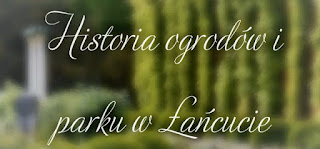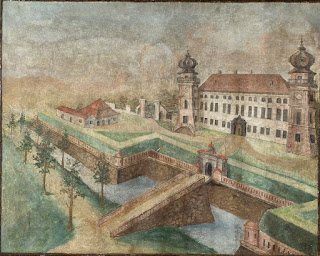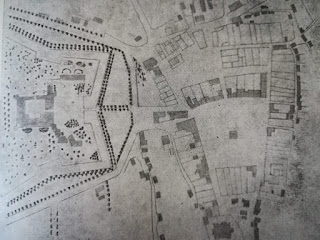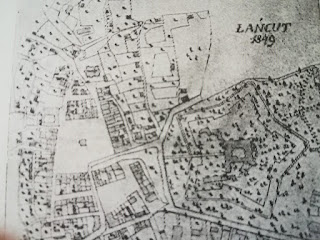CASTLE GARDENS IN THE XIXTH CENTURY, PART I

We can trace the history of the castle gardens in the 19th thanks to, among other things, the 1820 plan of the city of Łańcut. This is because it includes a fragment of the garden by the Castle, enlarged on the western side by an area directly adjacent to the alley surrounding the moat. The roads that surrounded the garden and the one leading to the north were planted with lime trees. In the inner part of the castle park, rows of trees were only in front of the eastern elevation, supplemented by single trees on the south and north sides. A larger concentration of vegetation existed in the corner of the northwest bastion and between the Armory and the bridge and the Orangery and the bridge. There were flower beds on the south side of the Orangery and on the north side of the Castle.

We can trace the history of the castle gardens in the 19th thanks to, among other things, the 1820 plan of the city of Łańcut. This is because it includes a fragment of the garden by the Castle, enlarged on the western side by an area directly adjacent to the alley surrounding the moat. The roads that surrounded the garden and the one leading to the north were planted with lime trees. In the inner part of the castle park, rows of trees were only in front of the eastern elevation, supplemented by single trees on the south and north sides. A larger concentration of vegetation existed in the corner of the northwest bastion and between the Armory and the bridge and the Orangery and the bridge. There were flower beds on the south side of the Orangery and on the north side of the Castle.
 |
| Plan of Lancut 1820. |
In 1824-1827, a brick gazebo called the Bathhouse was built in the eastern part, a gardener's house and a new garden house. Between 1828 and 1830, a St. John's Lair was built in the eastern part.
People from the city and surrounding villages, such as Sonina, were employed to work in the castle park. They worked on paths, planted plants, sodded lawns and planted grass.
From the 1855 inventory, we learn that the whole was surrounded "from the guesthouse and the City, by a moat and wooden barricades, and on the two opposite sides by a ditch and hedge enclosed."
Along the road that led from the bridge to the castle gate, trunk plants were placed, exotic plants in pots.
The Armory building began to be covered by sprawling trees. On the north side of the Orangery flower beds were established, and in front of the entrance two large vases were placed on pedestals, and a coniferous tree was planted between them. On the north side of the Castle, six large copper vases were placed on terraces. By the library pavilion, opposite the Summer Room in the direction from north to south, two rows of tall trees grew.
In 1832, a bungalow was built and named the Citrine ( on the south side).
The garden bordered the city on the west side, on the south side it bordered the complex of buildings of the grange in Górne, on the north and east side it was adjacent to fields.
 |
Plan of Lancut 1849. |
The 1849 plan shows that the castle garden expanded in the eastern part, with single trees or trees growing in groups scattered throughout the area, while regular avenues can be seen only in the northeastern part near the Romantic Castle. On the northern side, opposite the Castle, behind the Przeworsk guesthouse, an English park was established, a Pomological Garden and a vegetable garden were created near the manor house on Dolne, a Pheasantry was arranged on Podzwierzyniec, and the kitchen garden on Górny was transformed into a landscape park. During the reign of Alfred I Potocki (we wrote about him HERE), such gardeners worked in Lancut as Jan Zalauf (reconstruction project of gardens on Dolne and Górne), Franciszek Kesler (Kitchen Garden), Wittman (botanist), Gamell, Piotr Nawoy (garden at the Castle), Jan Bartman, Szymon Panek (Kitchen Garden) and Piotr Antoni Mozański.
